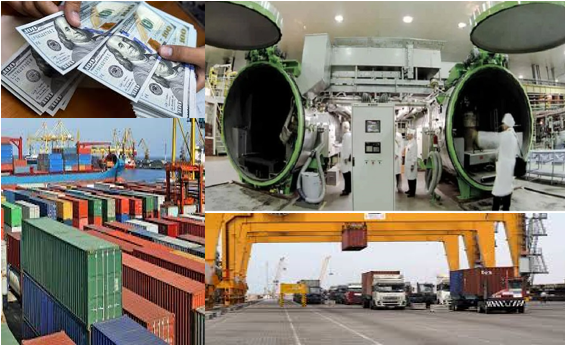
Iranian-made goods, once a source of pride, are now sold for a fraction of their worth, often to the regime’s sponsors. An October 14 report by Donya-eqtesad revealed startling numbers. A comparative look at the value of non-oil exports over the last two decades revealed a sharp decline in the global standing of the “Made in Iran” brand. In 2008, Iranian products fetched $551 per ton, but this figure plummeted to $356 per ton in 2023 – a significant drop in both fixed and current prices.
In terms of purchasing power from two decades ago, Iranian goods are now sold at nearly 40% cheaper rates. The country’s most profitable export products are tied to the oil, mineral, petrochemical, and agricultural sectors. But these revenues, especially from oil and gas, have often ended up in the pockets of the regime’s inner circle. Members of this elite group, including influential figures like Khamenei, the mullahs, and the Revolutionary Guards, reap vast benefits from these sales.
However, the economic decay isn’t limited to dwindling export values. An alarming trend of exporting subsidies and cheap energy, rather than genuine non-oil products, has taken root. The head of the Iran-China Chamber of Commerce, in 2019, commented on this flawed approach, highlighting how the government indirectly exports national subsidies, using the public’s money, instead of legitimate non-oil goods.

Tragically, the hemorrhaging isn’t limited to assets. Iran faces a severe brain drain, with thousands of its educated youth, including medical professionals, seeking opportunities abroad, escaping the nation’s oppressive conditions. A staggering annual exodus of 10,000 medical staff has been reported, and according to the Iranian Medical Council, the migration trend among the medical community has doubled in recent years. As of October 14, 2023, Iran is said to be exporting its medical professionals to five continents.
The systematic degradation of Iran’s socio-economic structure under the mullahs’ regime paints a bleak picture. The only viable solution appears to be a comprehensive change in governance, giving the nation a chance at true reformation and progress.

MEK Iran (follow us on Twitter and Facebook), Maryam Rajavi’s on her site, Twitter & Facebook, NCRI (Twitter & Facebook), and People’s Mojahedin Organization of Iran – MEK IRAN – YouTu







